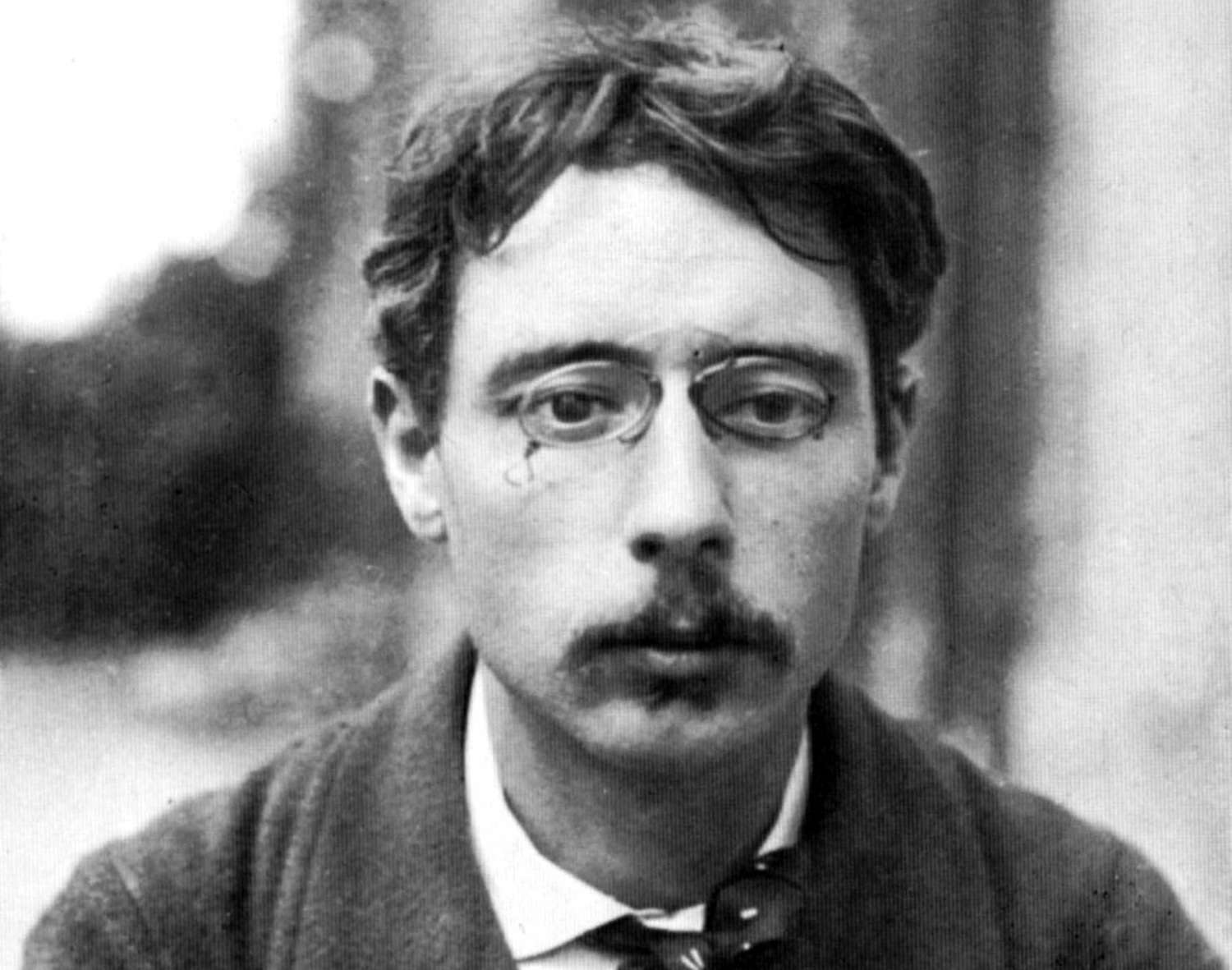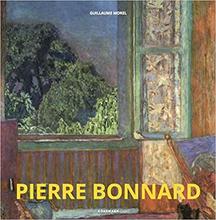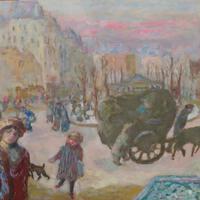More about Pierre Bonnard
- All
- Info
- Shop
Works by Pierre Bonnard

Contributor
Between 1889 and 1891, the young non-practicing lawyer Pierre Bonnard created a lively and brilliant poster, dominated by a festive and glamorous yellow, for the France-Champagne product of the Debray company.
He was paid 100 francs, which is about $5,670 in 2020 US dollars. The amazing poster "convinced Bonnard that painting could provide him with a living," and that he didn't need to continue the song-and-dance of "being a lawyer" to please Mom and Dad. It may seem a risky move, however, as he wrote to his mom, "But as I finger the hundred francs in my pocket, I must admit I feel proud." The poster shows the figure of a woman holding a champagne glass, whose overflowing bubbles fill the bottom part of the image; her right arm is not at all naturalistic, but bends in a lively round shape like a piece of well-cooked macaroni. She looks like a character from an early comic strip, which gives the viewer a feeling of joy without portraying her as particularly beautiful or glamorous, although, at first glance, you don't really notice how unusually Gumby-like her shape is. The poster shows how willing and ready the Debray company was to gamble on a radical new art style, and how, in some ways, the advertising world of 1891 France was more willing to take artistic risks than ad agencies of today. Henri de Toulouse-Lautrec, having discovered the small initials on the work, demanded to know the identity of this "P.B.," and became one of Bonnard's many illustrious artist admirers, both impressed by Bonnard's artistic vision, and appreciative of his humility. Pierre-Auguste Renoir, Paul Signac, Henri Matisse and Georges Rouault also sang Bonnard's praises.
Throughout his career, Bonnard often took his sweet time finishing his works, sometimes spending years on a single painting that he would compose without an easel, by tacking the canvas to his wall. Once, according to MoMA curator John Elderfield, Bonnard even whipped out his paints at a gallery exhibition, touching up one of his works while the guards weren't looking. "If you paint directly from your subject, it has an effect on your painting," Bonnard said,. He preferred find a subject, let it marinate, then paint it from memory. He was influenced by his association with, and by the other members, of the "Nabi" group, which took its name from the Hebrew word Navi, or prophet. Critics called Bonnard the "Nabi Japonard" because he loved Japanese prints, especially those of the Rimpa school, which resemble his work in their holistic use of space.
In 1896, theatergoers witnessed the premiere of Alfred Jarry's Ubu-roi at the Théâtre de l’Oeuvre, with sets, masks and costumes designed collaboratively by Bonnard, Paul Sérusier, Édouard Vuillard, Paul Ranson and Toulouse-Lautrec. Bonnard would also collaborate with Alfred Jarry on the 1901 text L'Almanach du Père Ubu, by providing the illustrations.
In an interview with L'Écho de Paris, Bonnard said, "I don't belong to any school. I just want to do something personal." As his intimate paintings show, the major work of his life was his forty-nine-year relationship with a woman named Maria "Marthe" Boursin, who introduced herself to him in 1893 as Marthe de Méligny, only revealing her true identity to him at their small wedding in 1925.
Sources
- Alhau, Max. "Goffette Guy, Elle, par bonheur, et toujours nue." Europe 76, no. 832 (1998): 252.
- "Historical Value of French Franc." AskMetaFilter, http://ask.metafilter.com/275442/Historical-Value-of-French-Franc-in-co….
- Johnson, Una E. Ambroise Vollard, Éditeur, 1867-1939. New York: Wittenborn and Company, 1944.
- Kostenevitch, Albert. Bonnard and the Nabis. New York: Parkstone, 2012.
- Renault, Olivier. Bonnard, jardins secrets. Paris: Éditions de la Table ronde, 2015.
- Terrasse, A. "Matisse et Bonnard: quarante ans d'amitié." Revue de l'Art Paris (1984): 77-84.
- Webster, Ian. "$200 in 1890 → $5,672.86 today." Official Data Foundation, https://www.in2013dollars.com/us/inflation/1890?amount=200.
Featured Content
Here is what Wikipedia says about Pierre Bonnard
Pierre Bonnard (
French: [pjɛʁ bɔnaʁ]; 3 October 1867 – 23 January 1947) was a French painter, illustrator and printmaker, known especially for the stylized decorative qualities of his paintings and his bold use of color. A founding member of the Post-Impressionist group of avant-garde painters Les Nabis, his early work was strongly influenced by the work of Paul Gauguin, as well as the prints of Hokusai and other Japanese artists. Bonnard was a leading figure in the transition from Impressionism to Modernism. He painted landscapes, urban scenes, portraits and intimate domestic scenes, where the backgrounds, colors and painting style usually took precedence over the subject.
Check out the full Wikipedia article about Pierre Bonnard












